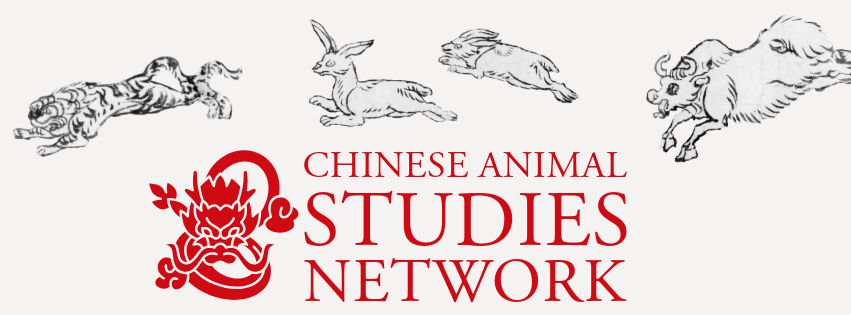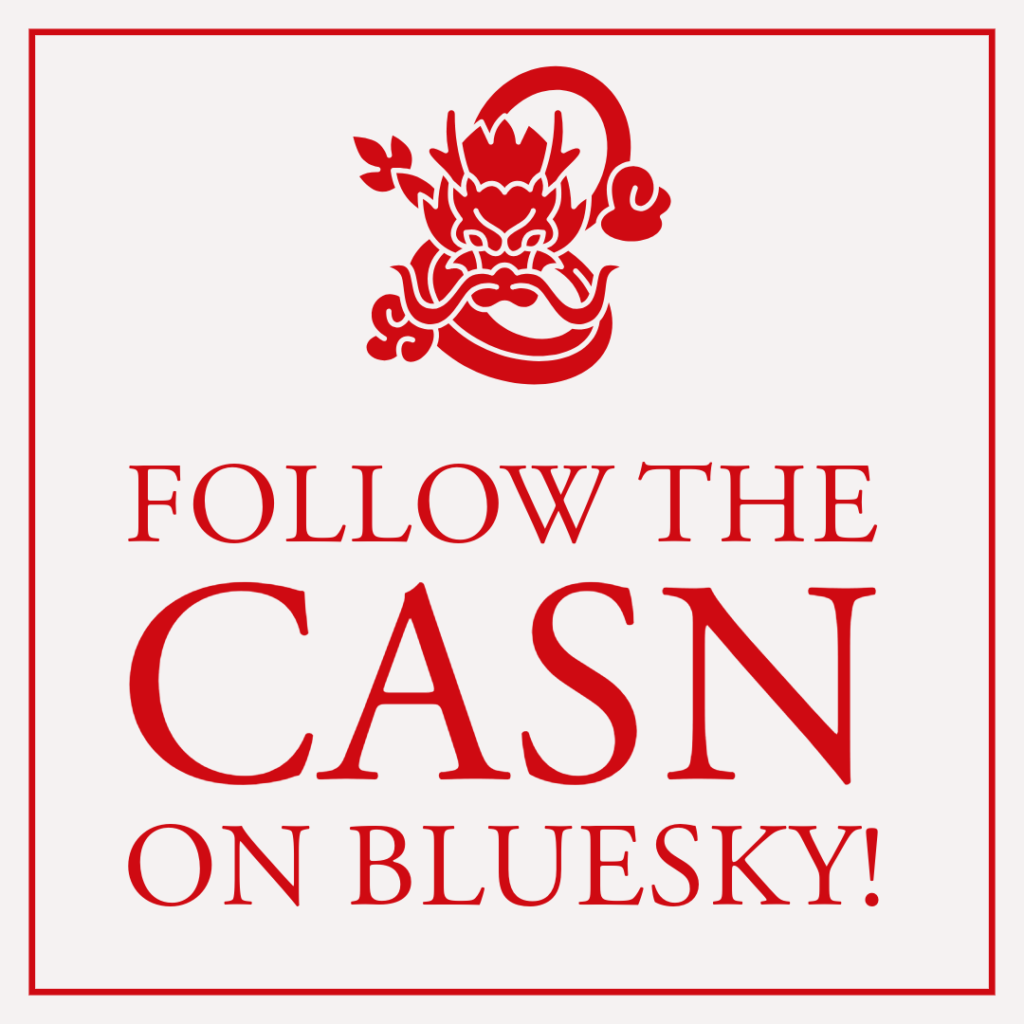
For our latest Emerging Voices feature, we are thrilled to hear from Rachel McVeigh at Harvard University about her research on medieval crane-keeping, poetry, and Chinese canine film-stars!

Rachel McVeigh is a doctoral student at Harvard University working on the interplay between individual expression and generic convention in poetry, as well as the conceptual tools used to understand and evaluate these interactions. She completed her B.A. in Chinese at Oxford University and her Master’s in pre-modern Chinese literature from Peking University, where she wrote her thesis on “Form and Change in the Elegiac Poetry of Early Medieval China”.
Hi Rachel! To start, what first inspired you to include animals in your research?
I was working on the role of genre conventions in medieval Chinese mourning poetry, and found a wealth of poems written about the deaths or losses of animals. This really intrigued me from a poetic perspective – how and why do people adapt literary conventions developed for human deaths in the case of animals? – but got me interested in representations of animal-keeping practices in pre-modern China. I also owe thanks to Professor Thomas Kelly, who ran a seminar on ‘literary things’ focused mostly on material culture but relating also to animals as non-human ‘things’ which gave me the space to think about these topics.
Your Ph.D. focuses on cranes in medieval Chinese literature. Could you summarise your thesis topic for us?
This is still in the early stages of development (US Ph.D. programmes being as long as they are), but I’m working right now on how medieval Chinese writers represent the practice of keeping captive cranes: how they negotiate tensions between idealised textual cranes as paradigmatically free and actual practices of keeping them confined; how interactions with cranes prompt reflections on the possibility of inter-species communication; and how these texts fit into broader cultures of humans’ relations with animals and with possessions.
Is there anything surprising you’ve come across in your research so far?

I discovered how much money early Hollywood “dog stars” made – a Chinese newspaper reported in 1927 that the most famous, Rin Tin Tin, made $785 per week, which is over $14,000 today. A lot more than my stipend!
Is there a resource or theory you’ve found particularly helpful while developing your research?
They’re classics, but Derrida’s L’Animal que donc je suis and Berger’s “Why Look at Animals?” have both been central for me in foregrounding inter-species acts of looking (back).
How can we find out more about your research?
I have a partial translation of a very quirky Qing-era “Catalogue of Snakes” (mostly fantastical) in an upcoming environmental history sourcebook; there’s also my paper on the reception of Hollywood “dog stars” in Republican China, which will be undergoing review soon, and will hopefully make it into the public realm at some point.
I’ll be presenting on different aspects of my recent work on cranes at the centennial meeting of the Medieval Academy of America in Harvard in March and at the International Society for Intellectual History’s annual meeting in Aarhus in June. Finally, follow me on Bluesky for occasional updates and animal-related tidbits!
Finally, if you could be an animal, what animal would you be and why?
Maybe a red panda, because they’re mostly herbivorous, mostly nocturnal, and try to look taller than they are (all of which apply to me). But friends say I’m like a golden retriever – I guess because I’m sociable, excitable, and pretty straightforward by nature.


